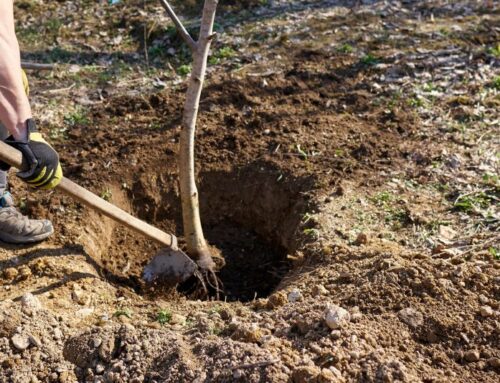What if I told you that buying mulch is the same as buying your tin cans back from a recycler?
When we go prune trees, we tend to chip up a lot of tree limbs and logs.
After we leave a property we drop those chips off at a recycler. The recycler will combine them with other recycled woods, grind them down to a uniform size, add dyes to darken their color and sell the resulting “processed mulch” back to the same people who paid us to take it from them.

Wait… what?
There is no practical difference between chipped up logs and processed mulch. Actually, chipped up logs are a little better, all of the wood is guaranteed to come straight from an actual tree and they don’t cost anything since we chip up logs all day every day. Unless a processed mulch is certified by the Mulch and Soil Council, some of that recycled wood may be CCA-treated and contain arsenic which is obviously bad for both plants and people.
The Benefits of Mulching
Mulching is one of the best things you can do for a tree, especially a young tree that is still establishing itself. In the simplest sense, mulching creates a fake forest floor, providing the organic material that would normally fall from above and collect over time.
Trees have evolved to live in those conditions and when planted in concrete rimmed islands and planter boxes they are thrust into an entirely artificial habitat. To ensure their health, they must be provided with a stable environment under the ground. Mulch does this primarily by insulating the soil from changes in temperature and regulating water evaporation.
Going without mulch is a death sentence for soil quality, without a steady influx of fresh organic material the soil is unable to renew itself, becoming empty and unable to provide quality nutrients. On top of that, mulch improves water penetration into deeper layers and will improve the soil’s structure over time, allowing more air in to keep roots breathing and healthy.
OMG that mulch is gonna feel so GOOD!
Mulch should be applied in a four inch layer all around the base of trees and shrubs. Obviously, this is an enormous expenditure when tackled all at once, and most large landscapes are basically naked. This is perplexing for our arborists when they haul literal truckloads of organic mulch away from trees that need it desperately and take it to a recycle center.
Mulch derived from tree work is organic and has no dyes or chemicals. As a product of tree work, it is a mixture of pruning wood and dead tree removals. It is primarily fresh, wet wood which will naturally last for several years before needing to be topped up, the drier, dead portion begins to contribute important minerals and trace elements immediately after the first watering.
If you already have mulch, organic mulch is a lighter color and will have a less uniform chip size. It is a perfect mulch but without dyes it may not match processed mulch already present. If the color must remain uniform, the organic mulch can be used as a base layer and the usual mulch purchase can be smaller and go a lot further since only one inch needs to be applied for color.





